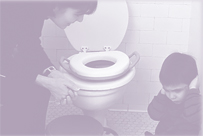Disabled 'hidden' in children
 While congenital malformations in children like no anus, tumors, tumors, etc., are easily seen through external observations, urinary tract malformations are rarely seen because of ' hidden ' symptoms within the muscle. can. This is a common disease in children.
While congenital malformations in children like no anus, tumors, tumors, etc., are easily seen through external observations, urinary tract malformations are rarely seen because of ' hidden ' symptoms within the muscle. can. This is a common disease in children.
Doctor Huynh Thoai Loan, Head of the Kidney Department (Children's Hospital 1), said that in recent years, urinary tract deformities are on the rise. In congenital diseases in children, malformations in the urinary tract - genitals make up the third row. Most of these malformations are treatable and help children develop normally later.
However, most cases of children are detected late and treated incorrectly before going to the hospital. In addition, many cases of the disease are only discovered by chance when the child cures another disease. In fact, the signs of urinary tract malformations in children if you pay close attention can still be seen as a big belly (especially large deviation to one side), abdominal pain, vomiting, diarrhea, difficulty urinating, water cloudy urine (with or without fever), hematuria, slow growth .
In advanced countries, more than 80% of urinary tract abnormalities say
Types of urinary tract abnormalities common
* The following urethral valve stenosis: This malformation appears only in boys. Initial manifestations are weak urinary incontinence, dyspepsia, dysuria, and sometimes crying due to pain causing pain. If not treated early, urine will become infected, cloudy, foul.
* Water stained kidneys: Patients with abdominal pain without digestive disorders (no vomiting or diarrhea), repeated.When you experience this symptom, it is advisable to give your baby an ultrasound of the abdomen early or a total urine analysis to check.If not treated early, children are prone to urinary infections.In this case, the kidneys are destroyed quickly, children have severe complications such as high blood pressure, sepsis, chronic kidney failure .
The above was detected very early through ultrasound during pregnancy. In Vietnam, the detection of prenatal urinary deformities is still limited, so most children are detected in the postpartum period.
Malformations with manifestations of hydronephrosis detected by ultrasound include: stagnant kidneys due to pyelonephritis narrowing; kidney and ureter double; ureters; Urinary bladder reflux. If the disease is detected early, surgery will bring good results.
For early detection of hydronephrosis, mothers should have an ultrasound check in the last 3 months of pregnancy. Immediately after birth, if the ultrasound results show that the child has this disease, it should be taken to a specialized facility for a definitive diagnosis.
For children under 1 year old, kidneys are vulnerable but also recover quite well when treated promptly. Some cases of hydronephrosis require no intervention and children can develop normally healthy to adulthood. The therapist will determine which cases need surgery and in which cases only need to be monitored.
Thuong Hang
- The engineer brings his hands to the disabled children
- Fake arms help creative children with Lego
- Why do the children of Samurai suffer from disabilities?
- Robot arm support disabled
- Wheelchairs for the disabled
- Invention helps children with disabilities to walk normally
- 'Cars' for the little ones
- 3D pushchair for disabled two legs
- Disability Olympics: What is Paralympic?
- The disease can be fatal after only 24 hours
- The hidden 'enemy' in every moon cake
- Wheelchair controlled by head
 Green tea cleans teeth better than mouthwash?
Green tea cleans teeth better than mouthwash? Death kiss: This is why you should not let anyone kiss your baby's lips
Death kiss: This is why you should not let anyone kiss your baby's lips What is salmonellosis?
What is salmonellosis? Caution should be exercised when using aloe vera through eating and drinking
Caution should be exercised when using aloe vera through eating and drinking Seeds became the 'secret weapon' that helped 4 children in a plane crash survive 40 days in the forest
Seeds became the 'secret weapon' that helped 4 children in a plane crash survive 40 days in the forest  Dangerous diseases that require vaccination from a young age
Dangerous diseases that require vaccination from a young age  If you put babies together without anyone teaching them to speak, will a new language emerge?
If you put babies together without anyone teaching them to speak, will a new language emerge?  The concubines, though favored by the king, had no children: An autopsy revealed the truth!
The concubines, though favored by the king, had no children: An autopsy revealed the truth!  How important are micronutrients to the human body?
How important are micronutrients to the human body?  Ancient Handprints on the Qinghai-Tibet Plateau: Unique Evidence of Human Evolution
Ancient Handprints on the Qinghai-Tibet Plateau: Unique Evidence of Human Evolution 